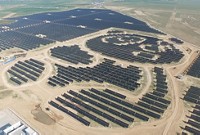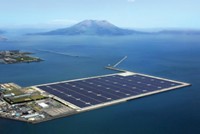Advertisement
Grab your lab coat. Let's get started
Welcome!
Welcome!
Create an account below to get 6 C&EN articles per month, receive newsletters and more - all free.
It seems this is your first time logging in online. Please enter the following information to continue.
As an ACS member you automatically get access to this site. All we need is few more details to create your reading experience.
Not you? Sign in with a different account.
Not you? Sign in with a different account.
ERROR 1
ERROR 1
ERROR 2
ERROR 2
ERROR 2
ERROR 2
ERROR 2
Password and Confirm password must match.
If you have an ACS member number, please enter it here so we can link this account to your membership. (optional)
ERROR 2
ACS values your privacy. By submitting your information, you are gaining access to C&EN and subscribing to our weekly newsletter. We use the information you provide to make your reading experience better, and we will never sell your data to third party members.
Business
Polysilicon Makers Cut Production, Lay Off Workers
Solar glut: Low prices and tariff threats force reduction in raw material manufacturing
by Melody M. Bomgardner
January 18, 2013
| A version of this story appeared in
Volume 91, Issue 3
Two manufacturers of polysilicon, a key raw material for solar panels, are reducing production, laying off workers, and postponing planned new capacity because of oversupply and plunging prices. The announcements, by Hemlock Semiconductor and Renewable Energy Corp. (REC), don’t surprise analysts, who say a two-year glut of finished solar panels has rippled throughout the solar supply chain.
Hemlock, majority owned by Dow Corning, will reduce production at its main site in Hemlock, Mich., and lay off 100 of the plant’s 1,000 workers. In addition, it will postpone the start-up of a $1.2 billion facility in Clarksville, Tenn., a decision that will cost 300 jobs. If the oversupply persists, Hemlock says, it could make the layoffs permanent.
The company also blames a trade dispute for adding to volatility in the solar materials market. Last March, the U.S. imposed tariffs on finished solar modules made in China because of complaints by U.S. firms that Chinese competitors were dumping subsidized products on the U.S. market. Now, China is threatening to place tariffs on U.S. polysilicon exported to China.
The threat “has significantly decreased orders from China, which is home to one of the largest markets for our products,” says Hemlock President Andrew Tometich.
Meanwhile, Norwegian polysilicon producer REC will cut production at its Moses Lake, Wash., facility and eliminate 46 positions. REC says polysilicon prices have fallen below the cost of production at the plant.
In October, another major manufacturer, Wacker Chemie, said it had reduced its polysilicon capacity utilization to 80% and would delay the start-up of its new plant in Charleston, Tenn., until 2015, 18 months late.
The cutbacks and delays show that “the breaking point has been reached, because there is so much excess capacity,” says Shyam Mehta, senior solar analyst for GTM Research. When the new plants were first planned in 2008, he points out, polysilicon had reached record prices of $400 per kg. Since then, spot market prices have dropped to $17 per kg.




Join the conversation
Contact the reporter
Submit a Letter to the Editor for publication
Engage with us on Twitter